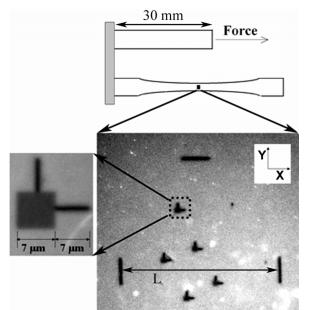Abstract
Optical photobleaching experiments and molecular dynamics computer simulations were used to investigate changes in segmental mobility during tensile creep deformation of polymer glasses. Experiments were performed on lightly cross-linked PMMA, and the simulations utilized a coarse-grained model. For both single-step and multistep creep deformations, the experiments and simulations show remarkably similar trends, with changes of mobility during deformation exceeding a factor of 100. Both experiment and simulation show a strong correlation between strain rate and mobility in single-step creep. However, in multistep creep, the correlation between strain rate and mobility is broken in both experiment and simulation; this emphasizes that no simple mechanical variable is likely to exhibit a simple relationship with molecular mobility universally. Both simulations and experiments show many features that are inconsistent with the Eyring model.
